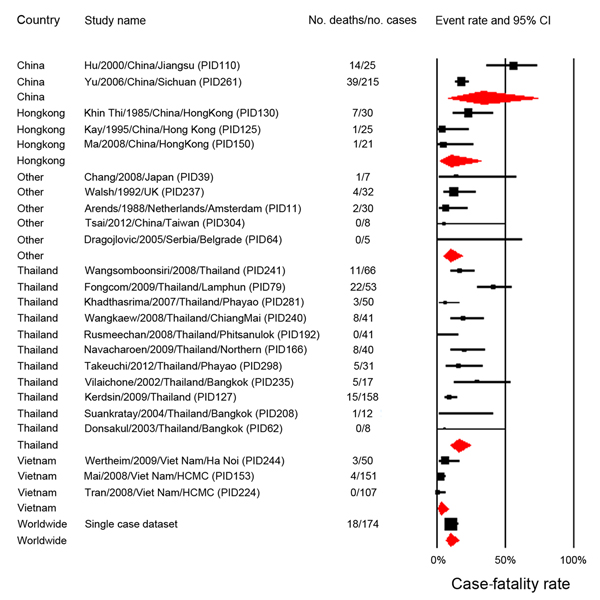Volume 20, Number 7—July 2014
Synopsis
Epidemiology, Clinical Manifestations, and Outcomes of Streptococcus suis Infection in Humans
Figure 4

Figure 4. Forest plot of subgroup meta-analysis (random effects) for the case-fatality rates by country reported in the 25 studies included in a review of Streptococcus suis infectionFor each study, the event rate of the death outcome and 95% CI are presented, with size proportional to study weightThe red rhombus indicates the pooled event rate for each country group.
1These authors contributed equally to this article.
Page created: June 17, 2014
Page updated: June 17, 2014
Page reviewed: June 17, 2014
The conclusions, findings, and opinions expressed by authors contributing to this journal do not necessarily reflect the official position of the U.S. Department of Health and Human Services, the Public Health Service, the Centers for Disease Control and Prevention, or the authors' affiliated institutions. Use of trade names is for identification only and does not imply endorsement by any of the groups named above.